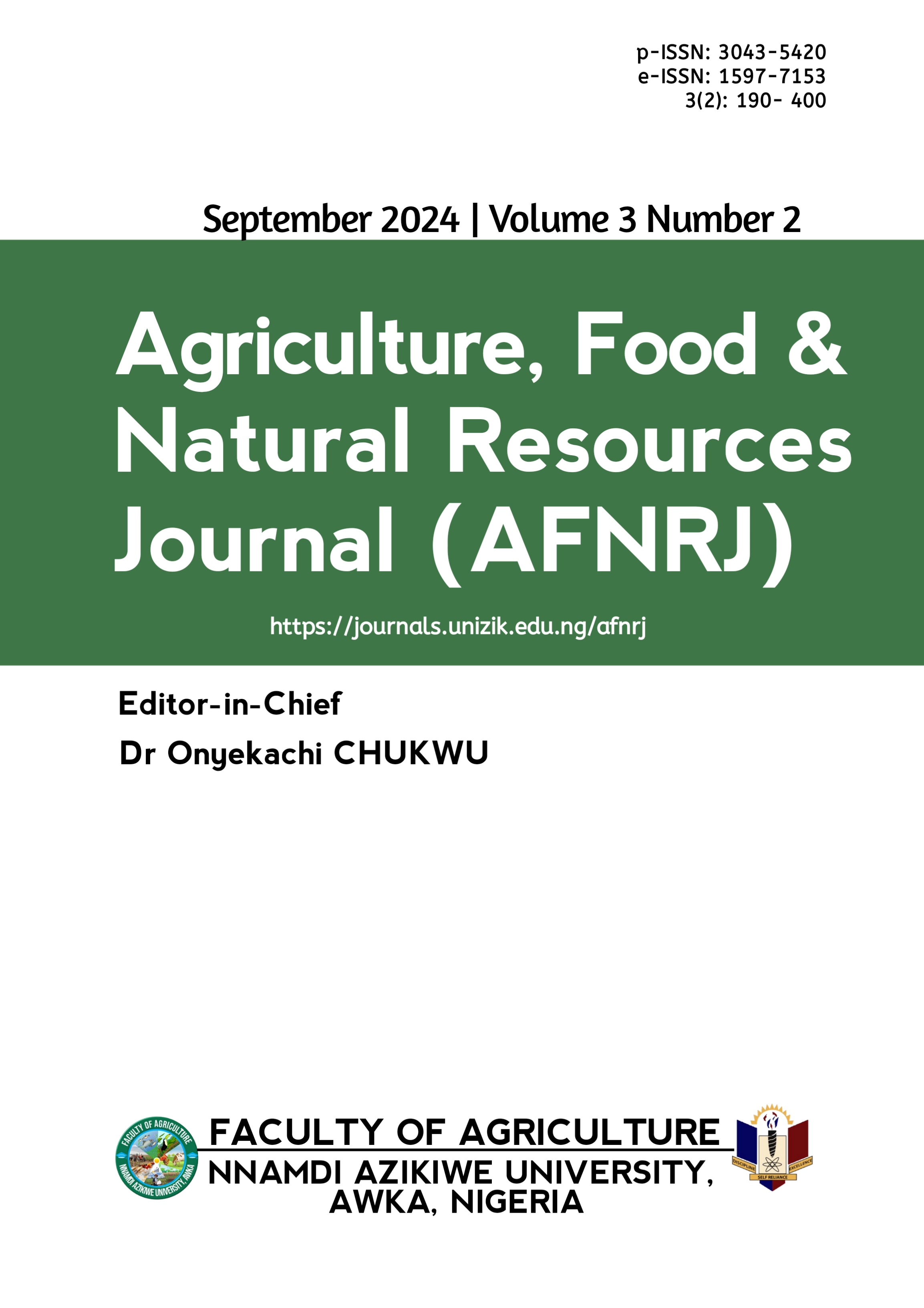Effect of dietary inclusion of turmeric (Curcuma longa) on the intestinal parasite and egg quality characteristics of Quails
DOI:
https://doi.org/10.5281/zenodo.14259466Keywords:
Dewormer, Intestinal parasite, Laying performances, Turmeric, QuailsAbstract
The problem of antibiotic resistance in birds necessitates the search for alternatives. This study evaluated the effect of dietary inclusion of turmeric (Curcuma longa) on the intestinal parasite infestation and egg-laying performance of Japanese quails (Coturnix japonica). Forty-five points of lay quails were randomly assigned to three treatments: T1 received 3g of turmeric per 1 liter of water, T2 received 1 tea spoon (4.2g) of dewormer (Bactro-expeller) per 3 liters of water, and T3 served as the control without any test ingredient. The experiment lasted for six weeks, with three replicates of five quails each. Egg quality parameters such as albumen height, egg weight, yolk index, and yolk width were significantly affected by the treatments (P<0.05). Analysis revealed the presence of intestinal parasites, with two cases of Strongyloides spp. in the turmeric-fed group and one case of Ascaridia spp. in the control. However, the dewormer-treated group showed no signs of intestinal parasites. The study concludes that turmeric inclusion in quail diets does not adversely affect egg performance and quality. However, it is ineffective in controlling Strongyloides spp. and should not be relied upon as a preventive or control measure for intestinal parasites. Instead, dewormers should be used, with strict adherence to dosage and withdrawal periods, by comparing turmeric-based diets with conventional worm expellers and evaluating their influence on quail egg production.
Downloads
Published
Issue
Section
License
Copyright (c) 2024 Cordelia Ifeyinwa EBENEBE, Francisca Chinwendu EZEOKE, Chukwuemeka Johnjude EZIKE, Benedeth Ndidi EZENYILIMBA, Joan Nneamaka EZE

This work is licensed under a Creative Commons Attribution 4.0 International License.
which permits unrestricted use, distribution, and reproduction in any medium, provided the original author and source are credited.
Authors retain the copyright of their published work in the AFNRJ.





